Key takeaways:
- Approximately 90% of the global population is exposed to air pollution beyond safe limits, highlighting a critical public health issue.
- Corruption significantly hinders effective air pollution regulation, often prioritizing financial interests over public health.
- Community engagement and empowerment are crucial for driving change and improving air quality at the local level.
- Technological innovations and regulatory reforms can offer viable strategies to combat air pollution and enhance environmental integrity.
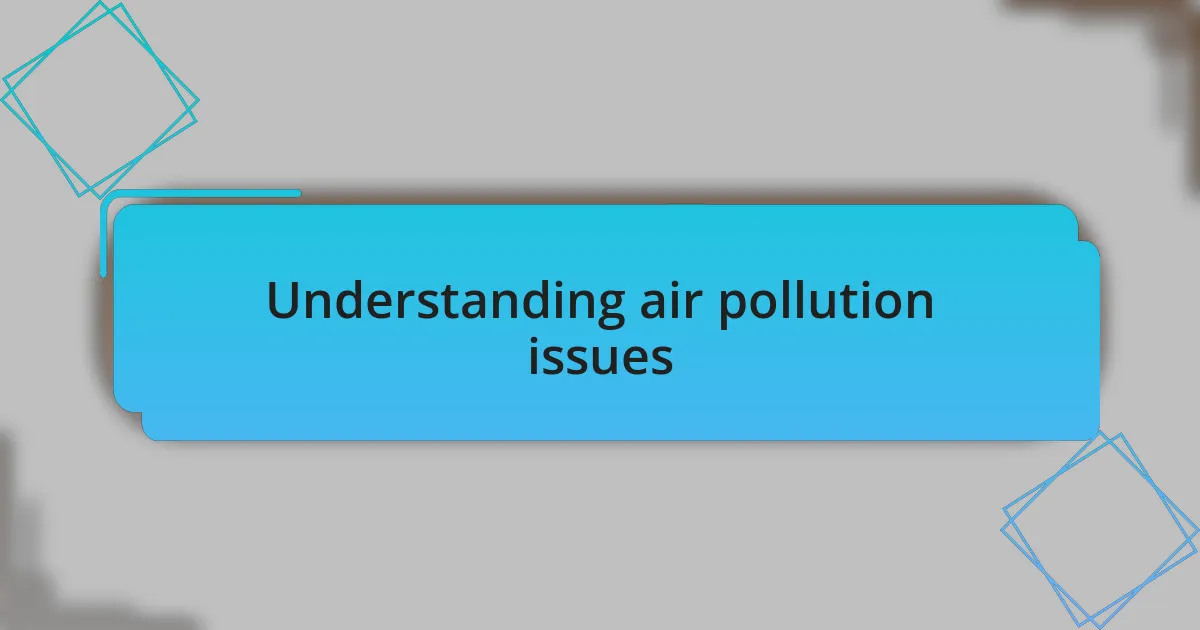
Understanding air pollution issues
Air pollution is more than just a health hazard; it’s a complex interplay of social, economic, and political factors. I remember visiting a bustling city where the air was thick with smog, making it hard to breathe and even harder to appreciate the vibrant surroundings. This made me ponder: how often do we overlook the impact of poor air quality on our daily lives?
Many of us don’t realize that close to 90% of the world’s population is exposed to air pollution levels that exceed the World Health Organization’s guidelines. When I think about children playing outside, I feel a sense of urgency. Are their future health and development being jeopardized by pollutants that we’re often unaware of? It’s a sobering reality that compels us to consider the vital changes we can advocate for.
Understanding the sources of air pollution is crucial, whether it’s vehicle emissions, industrial discharge, or even residential heating. I often shock friends when I share how burning just a single ton of coal can release hundreds of pounds of harmful chemicals into the air. By recognizing these issues and discussing them openly, we can begin to tackle this pervasive problem together.
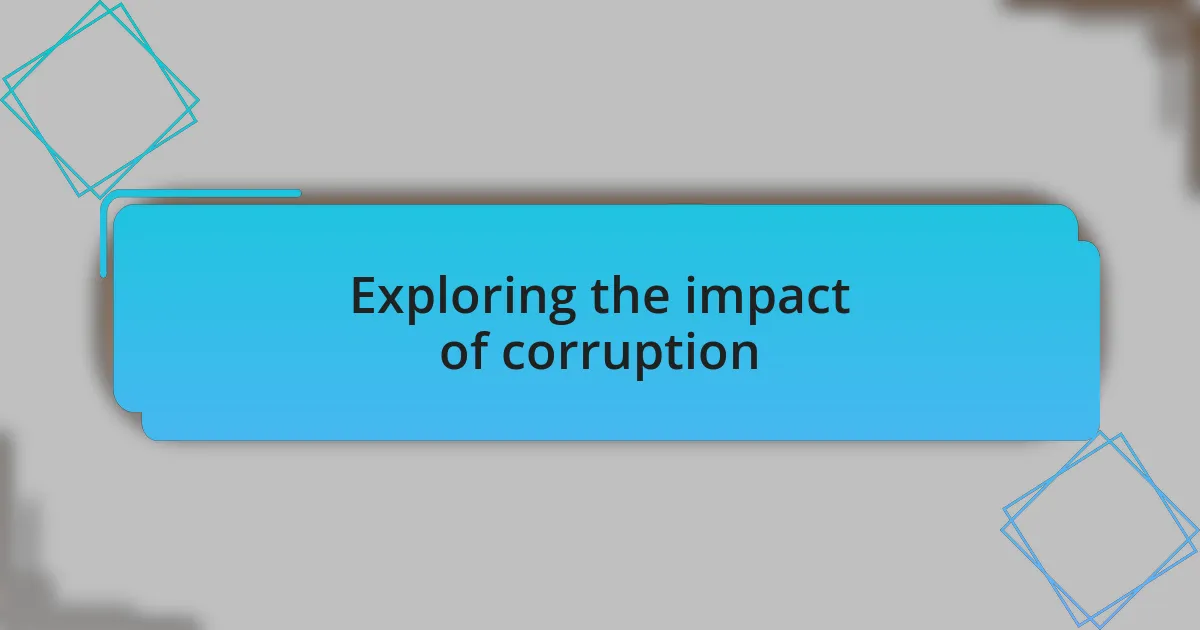
Exploring the impact of corruption
Corruption often plays a detrimental role in addressing air pollution. I recall a project I was involved in, where local authorities were supposed to implement stricter regulations for factories. Instead, they turned a blind eye, and I couldn’t help but wonder how many lives were compromised because of financial interests overshadowing public health. This leaves one wondering: how many innocent people suffer while officials line their pockets?
The lack of transparency in environmental policies can exacerbate air quality issues. While attending a community meeting, I was struck by angry residents who felt powerless against leaders who were more focused on profit than protecting their constituents. It made me think: what lengths are we willing to go to demand accountability from those in power?
Moreover, the interplay of corruption and air pollution can create a vicious cycle. I once spoke with an environmental activist who discussed how deteriorating air quality often leads to increased healthcare costs, which further drains public resources. Is it not time for us to view air pollution not just as an environmental issue, but as a corruption issue that demands our attention and action?
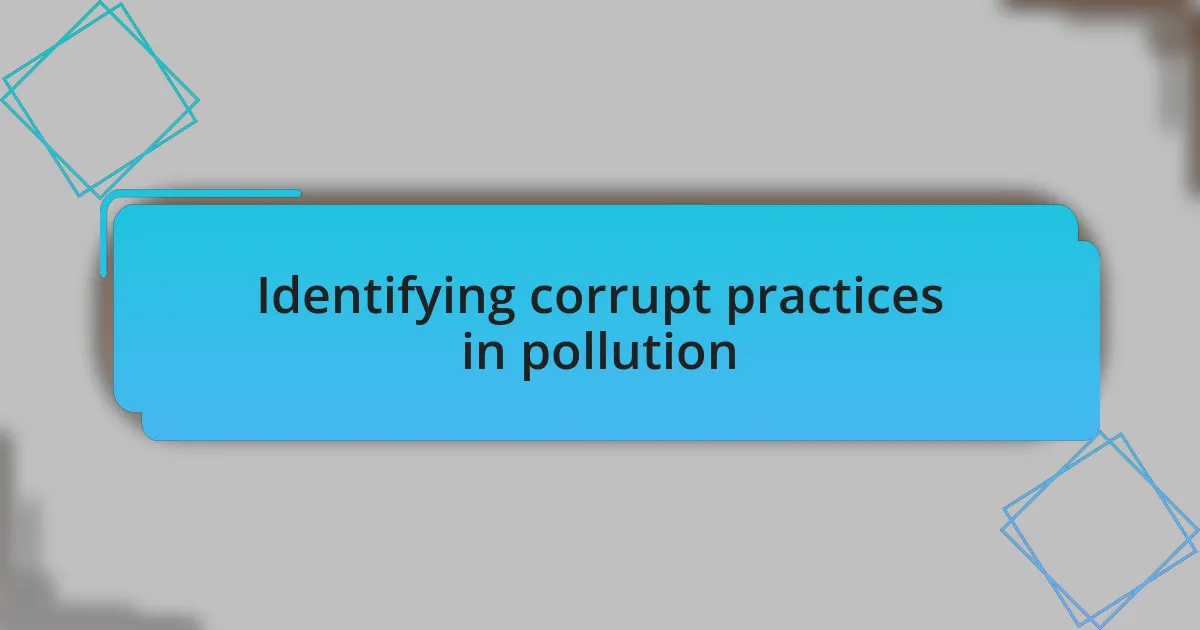
Identifying corrupt practices in pollution
Identifying corrupt practices in pollution begins with recognizing red flags in regulatory compliance. I once attended a conference where an expert showcased a case study of a factory with multiple emission violations, yet consistently received waivers from the local government. It made me ponder: how many similar agreements are crafted behind closed doors, jeopardizing our air quality for the sake of a profit margin?
A deeper look into funding allocations reveals alarming patterns as well. I remember reviewing a budget report that earmarked funds for cleaner technologies, but found that only a fraction reached meaningful projects. Where exactly was the money going? The community was left with questions but no answers, fueling skepticism about whether the intent to combat pollution was genuine or merely a facade.
Engaging with citizens can also provide insight into corrupt practices. I once facilitated a dialogue with community members who shared stories of politicians promising change but failing to deliver. Their frustration resonated with me—it’s heart-wrenching to think that those who should be advocating for healthier air are instead silencing voices for profit. What does it take to hold these corrupt systems accountable, especially when our health is on the line?
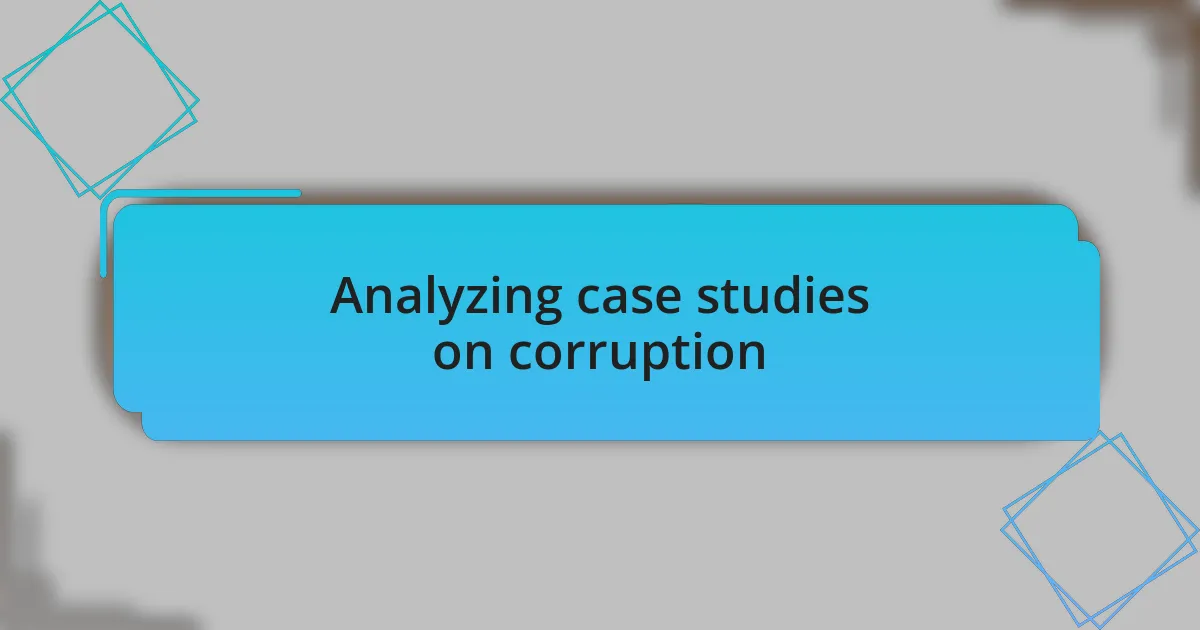
Analyzing case studies on corruption
Analyzing case studies on corruption requires a meticulous examination of the facts and the narratives woven around them. I recall examining a particularly revealing case where a construction company was implicated in bribing officials to overlook environmental assessments. This situation was eye-opening: how often do we assume regulatory bodies operate impartially, only to uncover a web of deceit that places profit above public welfare?
One striking case I studied involved a municipality that received federal grants for air quality improvements. However, investigations revealed that a significant portion of these funds found their way into the pockets of corrupt officials rather than being invested in actual pollution control measures. It struck me as a betrayal—these funds were meant to protect citizens, but instead, they perpetuated a cycle of corruption. What does this say about our systems?
Moreover, the emotional toll of corrupt practices is often overlooked. I remember speaking with a local activist who had dedicated years to advocating for cleaner air but felt utterly disheartened by the lack of accountability. She reflected on the lost hope in her community, a sentiment that lingered in my mind. How can we foster trust in institutions when corruption runs so deep? Each case study becomes not just a source of data but a story of lives affected, reminding us that the fight against corruption is also a fight for our communities.

Strategies for tackling air pollution
When tackling air pollution, I find that community engagement plays a crucial role. I once attended a local town hall meeting where residents voiced their concerns about smog and respiratory ailments. The passion in that room was palpable; it was clear that empowering communities to participate in decision-making can drive meaningful change. Have you ever felt that collective energy? It can be a powerful motivator for policy shifts and accountability.
Exploring technological innovations is another effective strategy. I’ve seen firsthand the impact of clean energy alternatives like solar panels and wind turbines. In one project I participated in, a neighborhood switched to solar energy, significantly reducing their reliance on fossil fuels. The excitement was contagious! The question arises: what if more communities could access these technologies? Their potential could redefine our approach to air quality.
Regulatory reforms are also essential in this fight. I recall a case where stricter emissions standards were implemented in response to public outcry. The improvements were noticeable, and people felt a renewed sense of hope for cleaner air. It makes me wonder—if similar reforms were adopted globally, what changes might we see in public health and environmental integrity? The possibilities are promising and urgently needed.
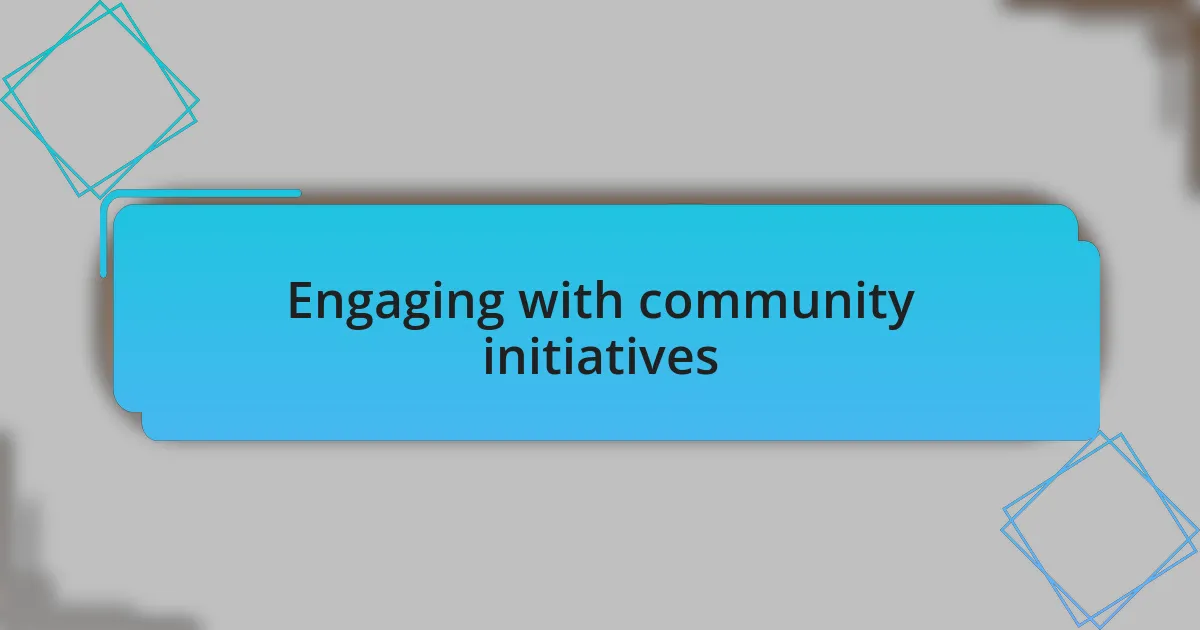
Engaging with community initiatives
When I participated in a community clean-up event, I was struck by how much it brought people together. Neighbors who had never spoken before shared stories and concerns about the air quality affecting our children’s health. There’s something deeply satisfying about working side by side with others who share your worries and aspirations; it creates a sense of unity that paves the way for stronger advocacy against pollution.
I remember coordinating a local workshop where residents learned about air pollution’s impact and what they could do to help. The enthusiasm was contagious! Attendees left with tangible actions they could implement, like starting small urban gardens or advocating for reduced traffic in our neighborhood. Isn’t it refreshing to see a community take charge and become proactive? Engagement breeds empowerment, and that energy is vital for creating lasting change.
Moreover, I’ve seen how partnerships with local schools can amplify community initiatives. When students take the lead in environmental projects, it ignites a passion for change that often spreads to their families. I once watched a group of kids rally their parents for a ‘Walk to School’ day, reducing car emissions and promoting healthier habits. Have you ever considered how young voices can drive such impactful actions? It truly reinforces the idea that every small step, or walking path, contributes to a cleaner future.